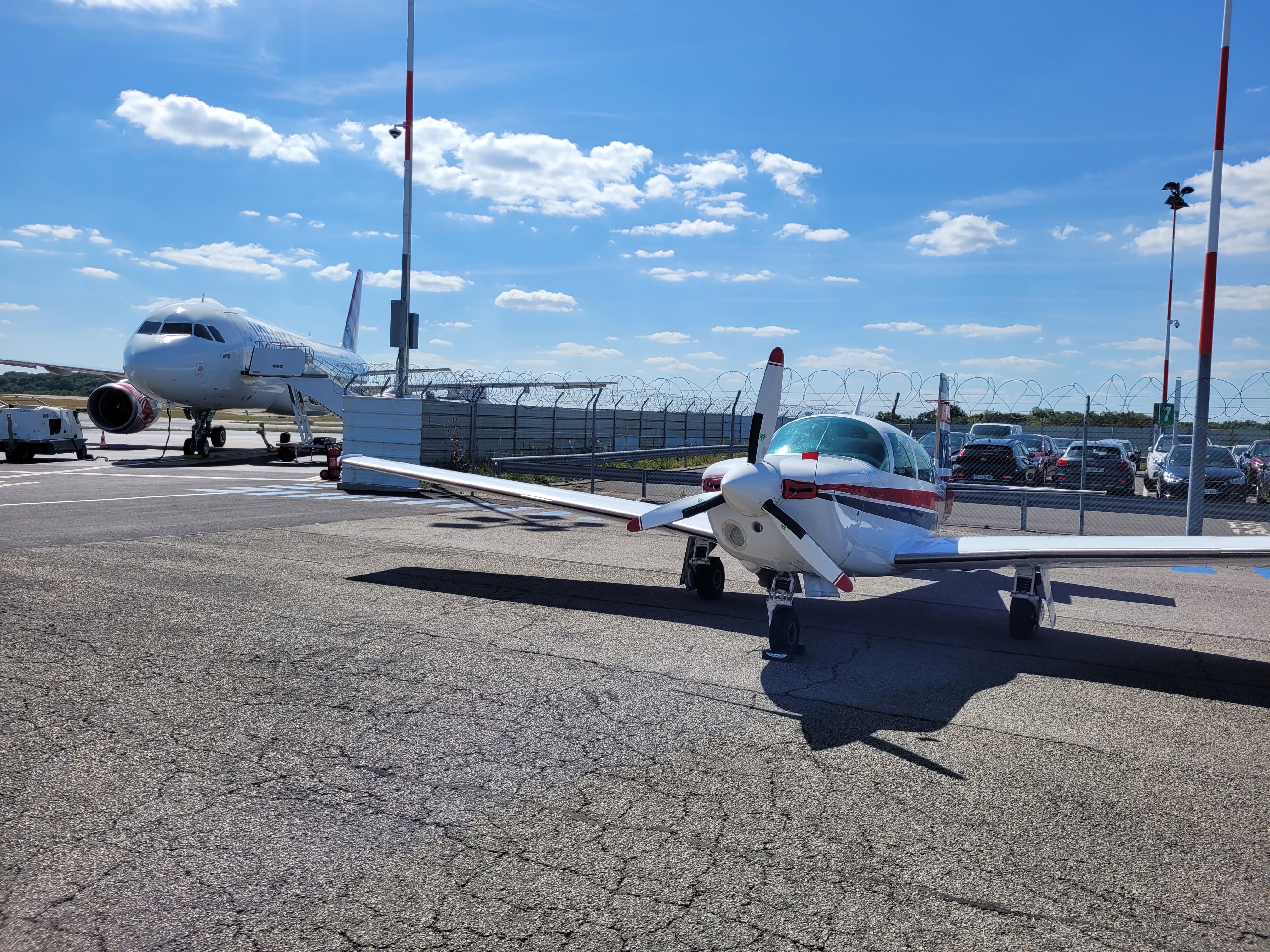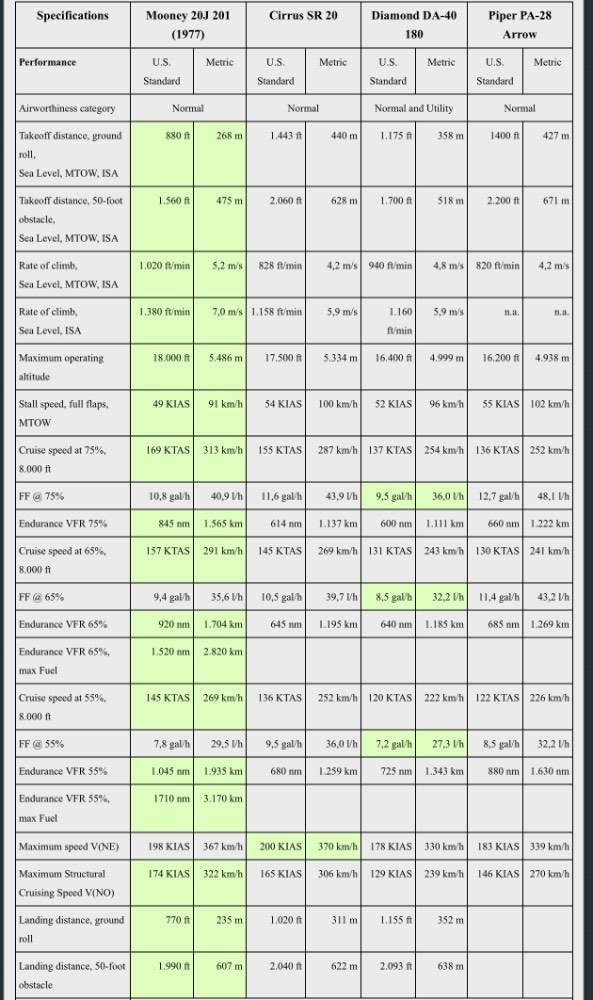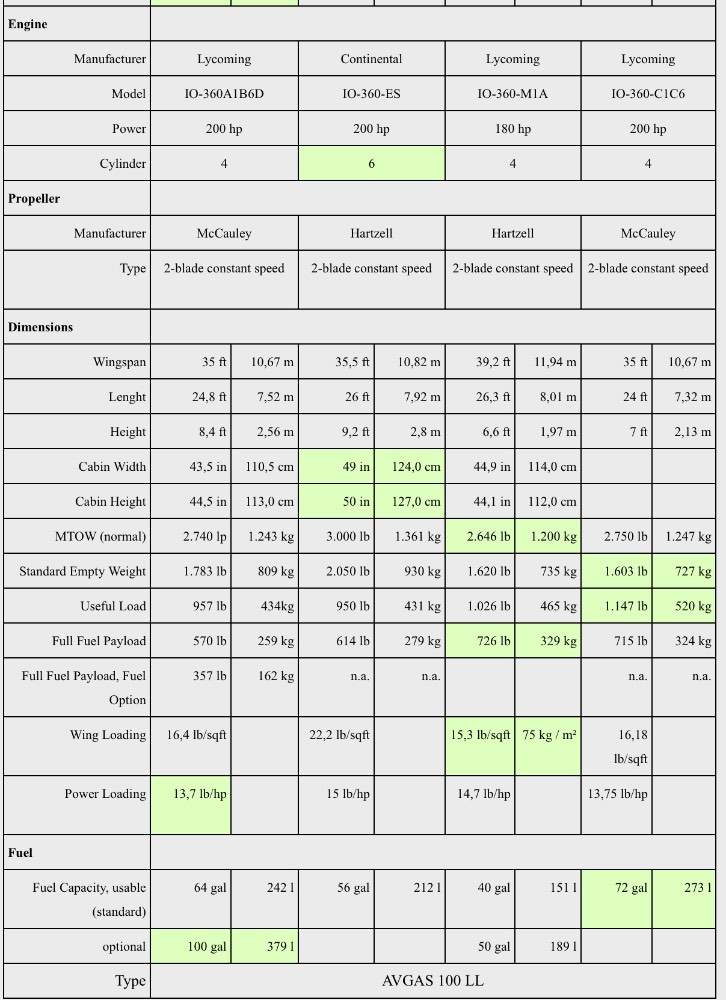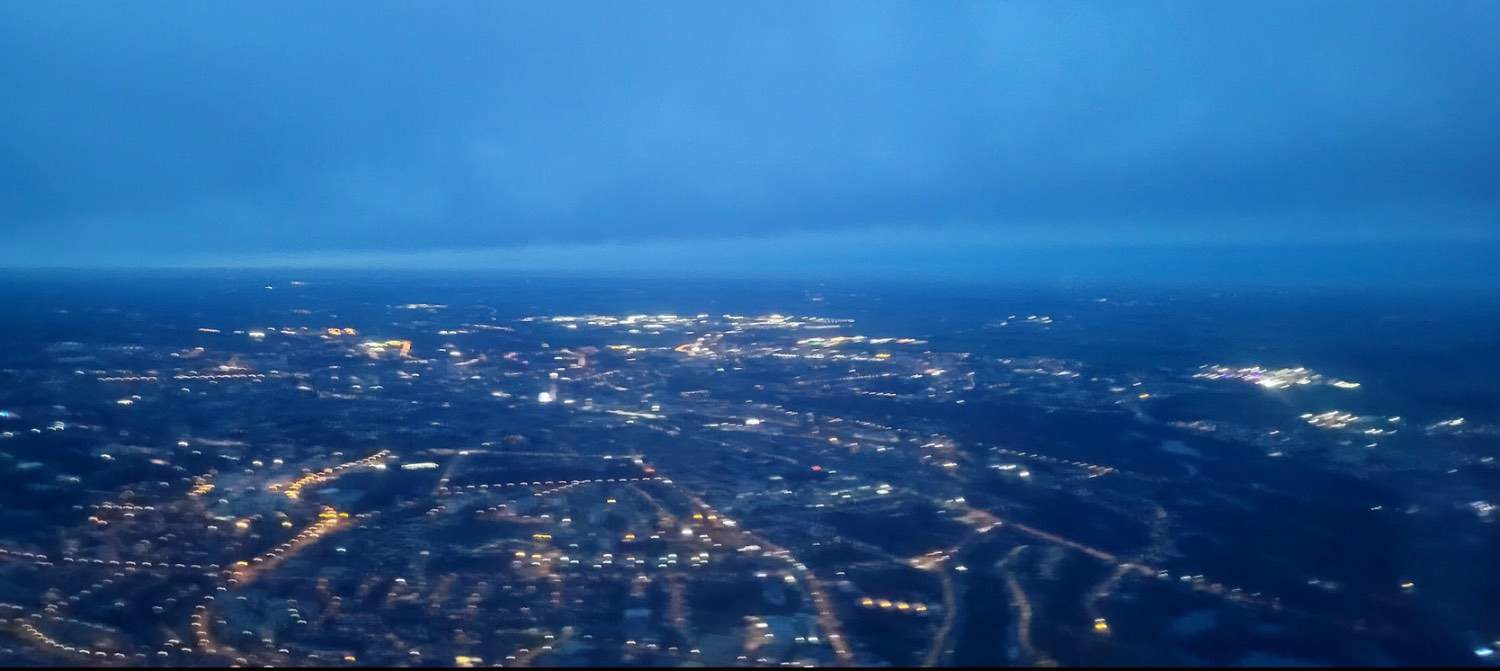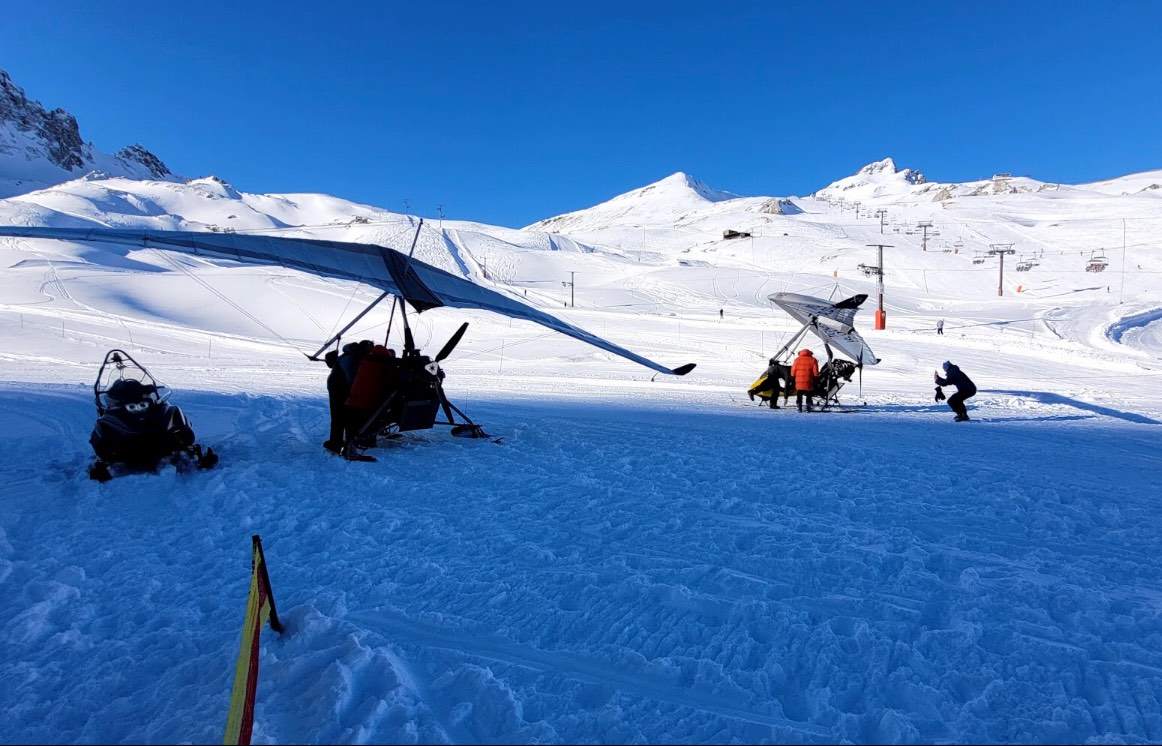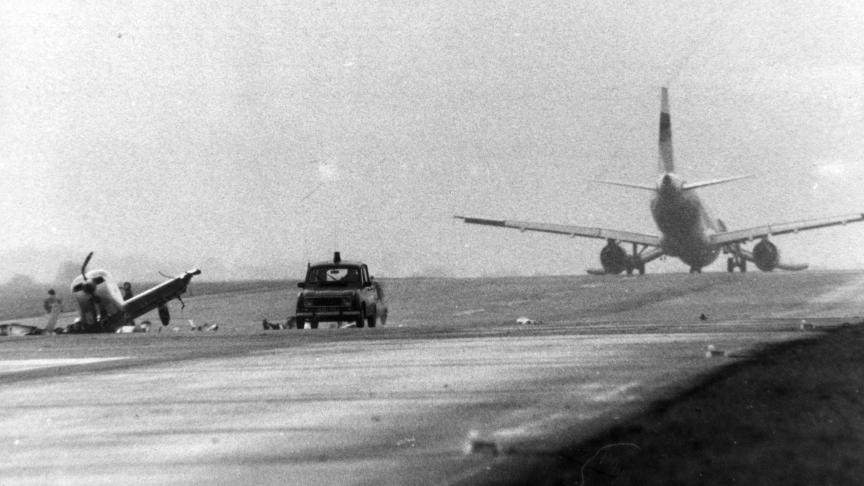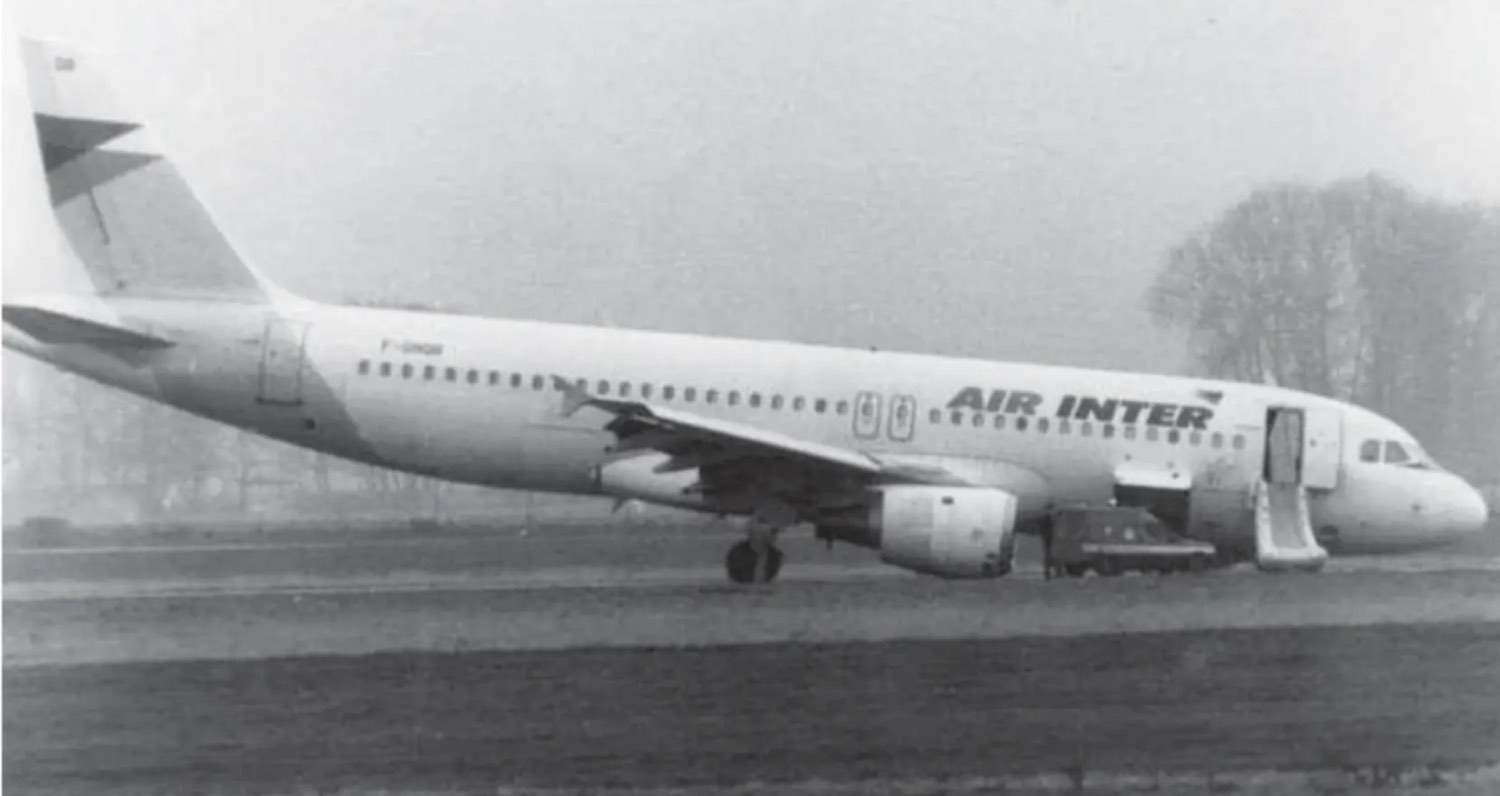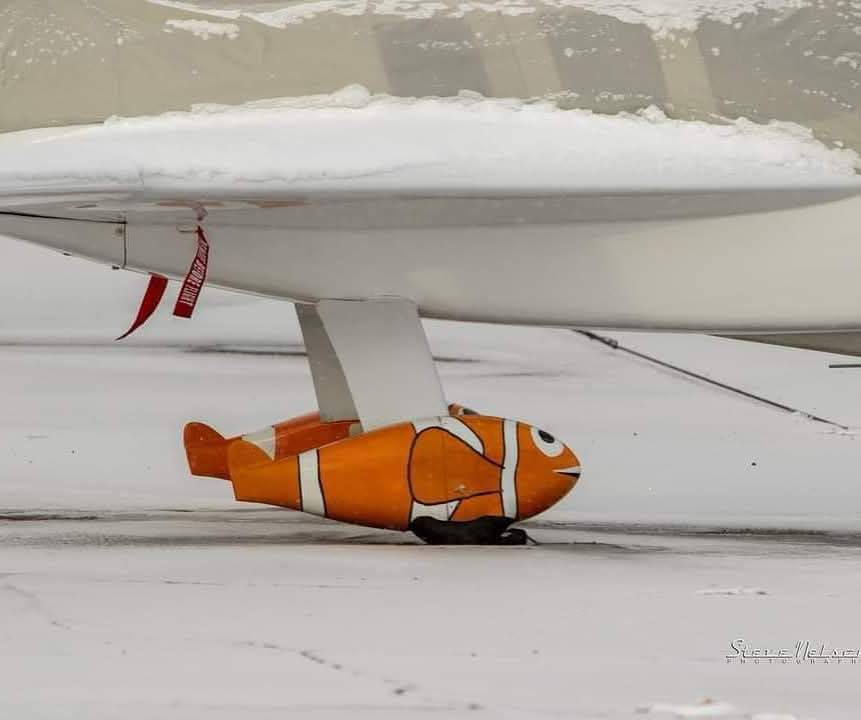-
Posts
1,236 -
Joined
-
Last visited
-
Days Won
1
Content Type
Profiles
Forums
Blogs
Gallery
Downloads
Events
Store
Everything posted by Ibra
-
Yeah, not this week: the "Artic Air has reached Texas" While ago I saw a non-turbo aircraft with TKS + AirCon (and not much useful load left), I can see now why someone needs both...
-
If you are not after turbos then: C, J, R are sweet spots of short, medium, long bodies. It’s like buying the latest product at the end of it’s cycle On topic, Diamond Aircraft managed to convert DA40XL to DA40TDI then DA40NG using JetA, these aircraft are efficient and well designed, however, Diamond Aircraft lost track on two items: integrated cockpits (it’s a bottle neck versus modular avionics) and they produced DA50NG which is basically “Diesel Ovation” that is heavy as hell and costs 1.5m$, who buys this stuff? There is a nice comparison of XL & M20J here (as well as SR22 and Arrow), the NG is far more efficient than XL (I used to pay 20$/h for fuel), I wonder what M20NG will do but I bet it rocks ! https://www.mooney201.de/why-a-mooney-.html The numbers speak for themselves,
-
Interesting discussion about 0-0 takeoff, I have done load of these under VFR in Pitts as forward visibility is c***p Never under IFR, my lowest takeoff was 600m (1800ft) RVR and my lowest approach was 800m (2400ft) RVR For weather minima on private IFR operations here: * If RVR is not published, there is not much, you still get lot of reminders from ATC: "check your minima?," "what are your intentions?", "are you doing it for the fun?" If RVR is published, * Takeoffs are limited to 400m-550m RVR by day (1200ft-1800ft or 1/4-1/3 sm) and 800m RVR by night (2400ft or 1/2 sm) depending on airports * Approaches are limited to 550m RVR (1800ft RVR or 1/3 sm) For takeoff: even when ATC RVR < 400m (1200ft), the pilot is still allowed to interpret PIC RVR by going to runway and calculating light bulbs × 200ft, we call it "VIBAL RVR", if he swears that he sees 7 lights bulbs, he is good to takeoff. However, there is no such thing as "zero-zero" takeoff. For landing: one need ATC RVR > 550m, there is "no approache ban" on private operations in Europe when RVR > 550m (in FAR Part91, there is an "approach ban" when RVR is lower than the plates?). I recall one reason for this is that: one is allowed to descend on ALS/HIALS lights only down to (in FAR Part91, I understand one is limited to 100ft agl unless they see runway, threshold, or touchdown...but Part91 are allowed this when doing Cat2/3?) My personal planning minima are usually way higher, especially for alternates and fuel planning. However when flying, I tend to fly legal minima: I am happy to take off as long as visibility exceeds my takeoff roll and ok with landing in 550m as long as I have approach lights and official glide. My last real approach was in December 100ft ceiling and 3000ft visibility as easy as it gets with wind <5kts. I rarely get the chance to go lower than than this? these occurances are once in 200h of flying and "I love flying weather at my homebase" (my goal is to fly away when weather is c***p at home to somewhere sunny, usually south, then return even when weather is still c***p at home).
-
The inquity is closed, for some reason the flight plan was mis-labelled as "scheduled flight/public transport": such flight should not have taken place from that airport (even by day) and someone decided to flag and follow up. I also got the radar traces, I am impressed someone check some obscure fields in ICAO flight plans and how long they keep this stuff, I don't even recall what was filed...
-
Thank you all for info/confirmation.
-
I guess it’s Echo that starts at 700-1000agl? It’s the same here, uncontrolled takeoff in Golf then join airspace above (usually, runway heading to 3000ft but sometimes THR assign SID/OMNI to some RNAV fixes). I guess the runway having light or not won’t change anything to the clearance delivery for takeoff? (or say an approach for landing?)
-
Thanks for the confirmation, AFAIK, it used to be the same rules here for night VFR: no difference except higher weather minima, 5km visibility, and higher obstacles clearance in cruise, I did my training under older rules. After 2012, the designations “Night VFR approved” and “Day VFR only” were introduced for airports. I assumed these do not affect night IFR takeoff which in my case was nothing extraordinary: plenty of “day light” even with night (here it’s sunset +30min). I did not even notice it was night: I had CTOT (sort of delay/release) on my flight plan, I called sector ATC by phone for clearance, he asked if it’s public transport flight? told me airport is closed but he will need to check, later come back and gave clearance to depart.
-
That's similar to European rules (lights are required for CAT airlines operation but not for NCO private operation) I am not sure which rule was violated? If it's something along FAR91.13 (or SERA.3101 here), then it's fine
-
Hello, Not a Mooney question, Anyone know if there are rules for IFR takeoff at night at untowred airfields without ATC? anything in Part91, FAR, AIM, TERPS that mandate or require runway lights (or taxiway, airport becon, obstacles...) for takeoff under IFR What about departures at night VFR from untowred airfields in US? Asking for myself, I have to reply to an inquiry regarding night departure while ago from untowred airfield following the standard departure (sort of SID), the airport has omnidirectional departures (sort of ODP)...
-
Happy new year to all Mooniacs ! First flight in Mooney (second flight of 2025): quick trip to Amiens (LFAY), cold weather here in Normandy but nothing compared to “freezing bones” in Chicago The first flight of 2025 was Wing-Shift ULM (sort unregulated LSA), takeoff on skis at 9500ft elevation on top of Alps, a very short flight though: at -15C, this is the best fun one can have with LOT of their cloths on, it did not last more than 15min my wife complained about flying in freezing cold on “something that looks like motorcycle”, I reassured her that it makes us younger: the cold help to preserve meat for long conservation, this analogy did not go very well
-
That's nuts, you won't be able to land once ATC is privatised (I know how medium/big airports works in countries with "private ATC"). In Europe, the only places with thriving GA and public ATC are France & Germany, the airport are still accessible to light GA (most of the rest has gone into the turf) For 38m$ from Avgas seems on the low side? from some "100LL transition" discussions, I understand 800mUSG is sold annually in US (100mUSG is sold in Europe where Avgas tax vanishes instead of going back to GA ), that's 5cent on gallon in taxes, it seems low? I would have expected 160m$ with 20cent on gallon and maybe 80m$ once the whales had their share Infrastructure is not supposed to make money, it's a money hole when you look at direct costs and revenues, the only benefit you get from it are the indirect economics around: tourism, pilot training, airtaxis, accessibility, flying schools, helimeds, jobs, council airports...most GA Part91 operators, don't require traditional airport services that cost dozens of millions per year, you only need a gate to get in/out from ramp, the "the user pays for what he uses" is a good logic instead of "the user pay to acess": for private comany owning airport GA is viewed as nuisance without much profits: not much money anyway compared to Public Transport
-
Is that automatic? they read fuel invoices, tail numbers and ADSB tracks They should at least do some smart work when the “user already paid” such as “hangar rental” and “fuel taxes”. How does it work for say based operators with hangar rental? are they are on some “exclusion list”? What starts as “user pays” does end up very ugly: there is not much money to make charging Part91 under 12000lbs, the next step for light GA is losing runway access and ramp access (loss of ATC, FBO monopolies, made up security rules, mouvements restrictions…). I know how it works for airports outside US The use of ADSB data outside flight safety or managing traffic is rather odd…
-
To be fair GAMI has already provided an answer to such question, see George reply here, https://mooneyspace.com/topic/50183-g100ul-thread-mia/#findComment-887934 It’s hard to get informed on pros & cons in middle of all the noise on this topic (will be gutted if it’s my paint) but again worth checking the specs of the sealants, checking for leaks, if one has “nitrile-O ring”…before using G100UL
-
I had that in Milan TMA as well, the fun part is everyone gets same radar code from ATC, how the heck, they know "who is who?" and "who talks Italian or English?" In France, I was told by ATC that they assign different transponder codes for aircraft speaking French (Helimed, Military, French VFR/IFR) than those talking English (English VFR/IFR), even when everyone has ModeS
-
My feeling they can and will but it has to be a fuel that is "blessed" by Lycoming and Continental For example, Swift UL94 is presented as 100LL without TEL, however, it has some additional aromatics that Lycoming does not like ==> Swift STC I have not figure out what it takes to fly using Total UL91 in US aircraft: it's listed in Lycoming SI.1070, it fits ASTM D7547 for unleaded fuels. Can I use it in N-tail PA28? or it will need an FAA STC? we are allowed to put it in German PA28 or French PA28 without STC because as you say "it's acceptable to administrator here"...
-
For 1st question, I think somewhere mid-1980 where engine manufacturers forced an extra wording to airframe TCDS (now they reference to SI1070 which reference ASTM approved fuels). You could argue that older aircraft can use any octane rating as long as that's what is stated fot airframe approval (even in cases where it's not recomanded or approved by engine manufacturers). If fuel is approved for engine, it should be easy to get blanket FAA airframe approval (to give an example: in EASA land, we can use UL fuels approved by engine manufacturers without airframe STC as "minor modification": logbook signature. For example, Total UL91 or Hjelmeco 91/96). For 2nd question, I assumed that because G100UL is not approved for engine by Lycoming or Conti, it has to get FAA airframe approval via STC?
-
Indeed, COVID was somehow a precedent where it was acceptable to “close X and carry on” (X = airport, restaurant, shop, fuel station). Then many of these places and businesses have never recovered: some has to do with laziness (there is a technical term somewhere) and a lot has to do with cost-cutting and online shopping post-CV19 https://www.retail-systems.com/rs/Supermarkets_Ditch_24_Hour_Opening_To_Pick_E_Commerce_Orders.php https://www.axios.com/2023/03/17/stores-restaurants-covid-changes
-
Looks like a nice trip is coming AIG and AXA are underwriters who will insure GA flights to South America in US registered aircraft (their policies were valid in South America). They don’t deal with private requests, so you may have to find a broker who work with them? For brokers, Parker AT airspeed insurance, he know the Mooneys Also, try Lance Van Wormer at CS&A lvanwormer AT chappellsmith https://www.chappellsmith.com/aviation/
-
One gets used to it for public airports (private airports are much more relaxed about opening hours) I recall while ago I was flying VFR from Poznan (Poland) to Stapleford (private airfield in UK) at night: one Dutch ATC along the way told me he never heard a single piston aircraft in frequency at night in his entire career (he was curious why we are doing it? ) For someone coming from US or used to fly in US, it comes as shock when airfield close at 5pm after fireman or controllers go home: unlike US where you have private pilots, Bizjets, Part135, helimeds, police...all flying untowred in middle of the night with PCL/LPV and load of arrangements with FBO or School I also complain about restaurant opening hours and service: in US one can eat lunch at 2am while being served with smile. Here in France, one is more likely to starve on Sundays if they land after 2pm in some remote village: the landing is the easy part, finding food is tricky
-
It was one condition to allow IFR to small airfields without ATS (I was one of meetings when this come up). It's a sort from CYA from DGAC to avoid the problems of mixing VFR/IFR traffic while talking different languages in untowred airfields... For ATC airfields, it's an aberration to use anything other than English for IFR on radio, things are moving in the right direction (e.g. "military ATC" now have to speak English) For IFR to uncontrolled airfields it's "double edge sword" or "leave that dog sleep". Most countries in Europe already prohibit IFR procedures to uncontrolled airfields outside ATS hours altogether (without English speaking ATC or English speaking AFIS). Actually, France is now starting to move to this direction as well due to some obscure "safety and harmonisation" requirements... Some countries even prohibit VFR without someone on radio outside ATS hours (e.g. no ATC or no AG operator at Shoreham EGKA = no flying, no Flughlighter in Germany = no VFR flying, no AFIS in Speyer = no IFR flying, no RO in Belgium = no flying...)
-
It's nice place to fly and learn, one tend to learn French easily with some wine (they can't fly though ). You don't need to learn a lot to visit smaller airfields (actually no one is flying around at lunch time), https://www.lingaero.com/FrenchRadio.HTM If you know the runway, all you need is "base piste 11", "finale piste 11", "piste dégagée" French ULM/UL pilots don't even go that far, they barely call "finale" if one is lucky
-
Usually for IFR it's English, however, there are two rare exceptions: sometimes in France, they use French and in Spain they use Spanish. I think it's something to do with national pride (altough it adversely affect safety) and fact that ICAO still recognise 6 languages (Engligh, French, Spanish and one would get the same on radio with Russian, Arabic, Chinese. However, I have not flown that far under IFR) For radio in uncontrolled VFR airfields, it's part of the fun: I am lucky being able to speak German and wife can talk Spanish, we still get surprises when trying to guess Catalan and Schweizerdeutsch
-
Indeed, especially if it's 500m RVR ! I think he was told to "hold and contact tower", which was misinterpreted as "lined up and hold", I think the standard radio now is "hold position". The inbound traffic was using French on tower frequency, which did not help...Let's say things are better now, however, I still hate getting "line up and hold", I keep nagging the tower every 5 seconds until they clear me to takeoff, even 30 seconds feels like ages: you are on threshold waiting for takeoff clearance while other traffic are busy chatting in pattern or procedure behind "my 6 o'clock" I am impressed how that Mooney and pilot walked away...
-
I met a retired airport staff who told me about this Mooney accident: https://asn.flightsafety.org/wikibase/326152 Looking at the picture from archives, I am surprised how Mooney and pilot survived? The interesting part of the story: the pilot walked 2km for 30min in the fog all the way to the terminal (the pilot was Wubbo Ockels, a Dutch astronaut who flew US Space Shuttle, I understood it was a case of mis-communication between pilot and tower)
-
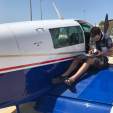
Legal to Fly a J-Model without Wheel Covers?
Ibra replied to MooneyAcolyte's topic in General Mooney Talk

